Are you struggling to remove silicone from your hair? Silicone is a common ingredient in hair products, but it can build up over time and leave your hair feeling weighed down and greasy.
Silicone-based hair products, such as conditioners, serums, and styling products, are widely used for their ability to add shine and smoothness to the hair. However, silicone build-up can leave hair feeling weighed down, dull, and difficult to manage over time. To restore hair’s natural vibrancy and health, it is essential to remove silicone residue effectively.
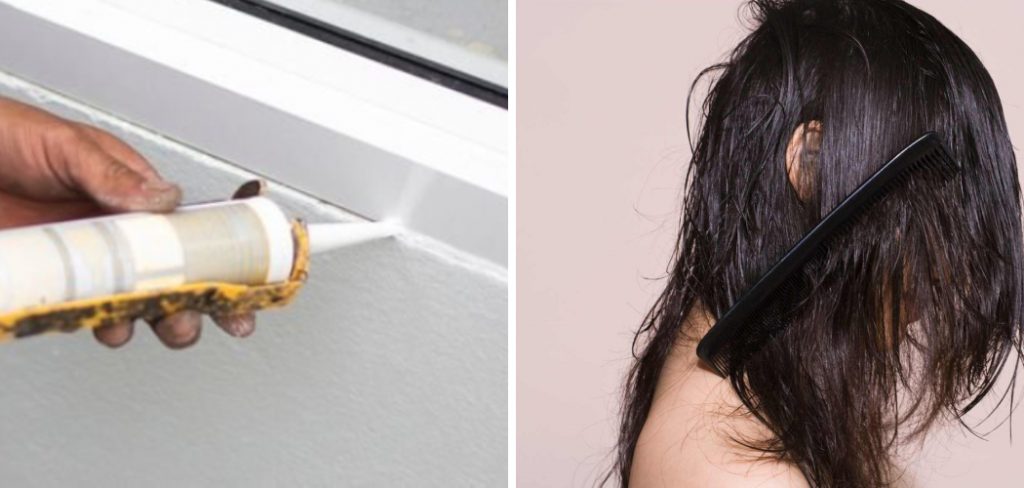
In this guide on how to get silicone out of hair, we will explore various methods and techniques to help you get silicone out of your hair, allowing your locks to breathe and shine with renewed vitality. Say goodbye to silicone build-up and hello to healthier, more lustrous hair!
What Are the Benefits of Removing Silicone from Hair?
Before we discuss the steps to remove silicone from your hair, let’s understand why it is essential.
- Restores Natural Volume: Silicone build-up can weigh down hair and leave it looking flat and lifeless. Removing silicone can restore your hair’s natural volume and bounce.
- Promotes Healthy Hair Growth: Silicone can block the scalp’s pores and impede healthy hair growth. Removing this build-up allows for proper circulation and nourishment to the roots, promoting healthier hair growth.
- Enhances Shine: Silicone can create a layer on top of the hair shaft, making it difficult for light to reflect off the hair and give it that coveted shine. Removing silicone can help restore natural shine and make your hair look healthier.
- Improves Product Absorption: If your hair products are not working as effectively as they used to, it could be due to silicone build-up. Removing silicone allows for better product absorption, making it more effective in nourishing and styling your hair.
Once you understand the benefits of removing silicone from your hair, let’s explore some methods to do so effectively.
What Will You Need?
Before you begin, gather the following items:
- Clarifying Shampoo
- Apple Cider Vinegar
- Baking Soda
- Coarse Salt
- Hair Treatment Mask or Deep Conditioner
Once you have these items, you are ready to start the process of removing silicone from your hair.
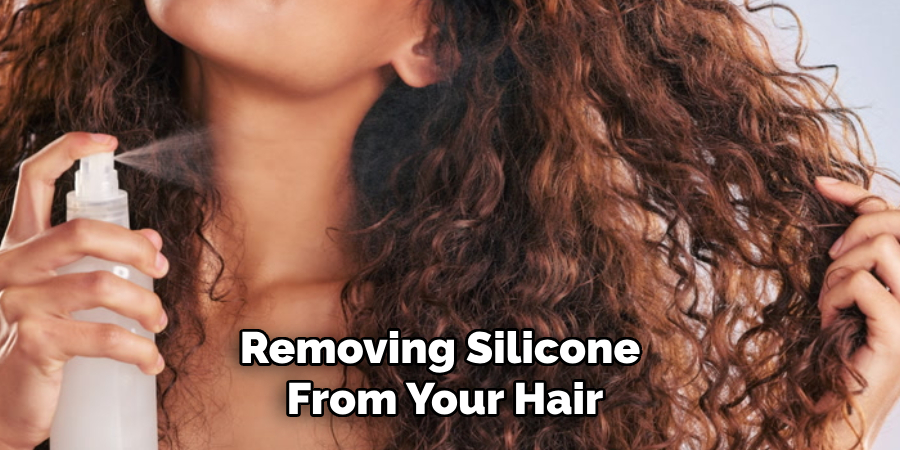
10 Easy Steps on How to Get Silicone Out of Hair
Step 1. Use a Clarifying Shampoo
Clarifying shampoos, including silicone, are specially formulated to remove build-up from hair products. Look for a clarifying shampoo free of sulfates, paraben,s, and other harsh chemicals, as they can strip your hair of its natural oils and cause further damage. Gently massage the shampoo into wet hair and scalp, focusing on areas where you use more silicon-based products.
Step 2. Rinse Thoroughly
After applying the clarifying shampoo, thoroughly rinse your hair with warm water. Ensure that all traces of the shampoo are washed out, as any residue left behind may contribute to further build-up. Gently massage your scalp with your fingertips while rinsing to help remove any lingering silicone and product residue. It’s essential to take the time to rinse your hair adequately to achieve optimal results in removing silicone build-up. Once rinsed, your hair should feel clean and free from any shampoo residue.
Step 3. Create a Baking Soda and Water Mixture
Baking soda is a natural cleanser that can help break down and remove silicone buildup from your hair. To create the mixture, combine one tablespoon of baking soda with one cup of warm water. Stir until the baking soda dissolves completely. Apply the mixture to your hair, focusing on the areas where silicone build-up is most noticeable. Gently massage it into your scalp and hair for a few minutes, ensuring even coverage. Baking soda not only helps remove silicone but can also restore your hair’s natural pH balance. Once you’ve massaged the mixture, rinse your hair thoroughly with warm water.
Step 4. Try an Apple Cider Vinegar Rinse
Apple cider vinegar (ACV) is another excellent natural remedy for breaking down product build-up, including silicone. To dilute it, mix one part ACV with three parts water. After shampooing or applying the baking soda mixture, pour the ACV rinse over your hair evenly, allowing it to soak in for a few minutes. Apple cider vinegar’s acidity helps to break down stubborn residues while promoting a healthy scalp. After letting it sit, rinse your hair thoroughly with cool water to seal the cuticle and lock in moisture.
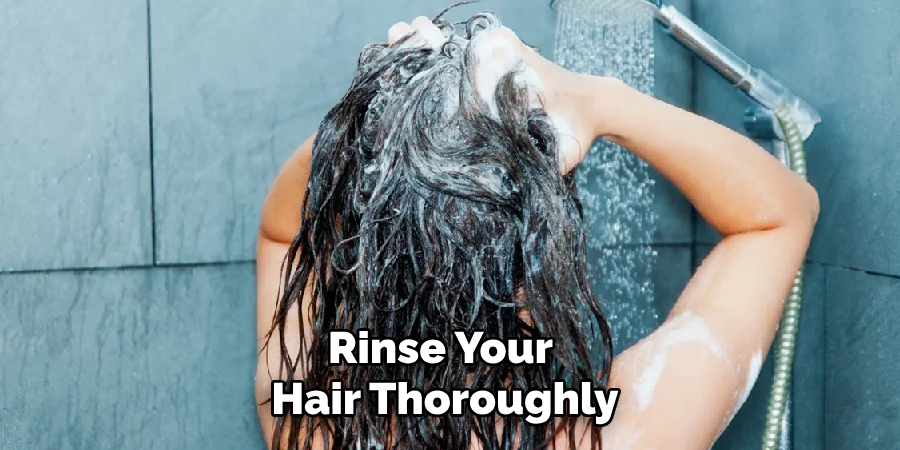
Step 5. Add Coarse Salt to Your Wash
Coarse salt can be a helpful exfoliant to scrub away silicone residues gently. Mix a small amount of coarse salt into your shampoo or make a salt scrub by combining coarse salt with coconut oil or water. Apply the mixture to your scalp and hair, gently massaging to avoid irritation. This technique helps remove build-up on the scalp and leaves your hair fresh and clean. Be sure to rinse thoroughly to ensure no salt particles are left behind.
Step 6. Deep Condition Your Hair
After using clarifying products or natural cleansers, it’s essential to replenish your hair’s moisture. Apply a nourishing hair treatment mask or deep conditioner to restore hydration and repair any dryness caused by the cleansing process. Focus on the mid-length to ends of your hair, avoiding the scalp. Leave the mask or conditioner on for the recommended amount of time, then rinse thoroughly with cool water to lock in moisture and leave your hair feeling soft and revitalized.
Step 7. Repeat if Necessary
If your hair has a significant amount of silicone build-up, you may need to repeat the cleansing process a few times. However, avoid overusing clarifying shampoos or harsh treatments, as this can strip your hair of essential natural oils and cause further dryness or damage. Space out the treatments by a few days to allow your hair and scalp to recover and maintain their natural balance. Pay attention to how your hair feels after each wash, and stop repeating the process once your hair feels clean, light, and free of residue.
Step 8. Avoid Silicone-Based Products
To prevent silicone build-up from happening again, review the labels of your hair care products and try to avoid those containing silicones like dimethicone or cyclopentasiloxane. Opt for more natural or silicone-free alternatives that provide nourishment without leaving residue. This switch will help your hair maintain its natural health and shine over time.
Step 9. Maintain a Regular Hair Care Routine
Establish a regular hair care routine that includes occasional clarifying treatments, hydrating masks, and high-quality, residue-free hair products to keep your hair healthy and free of build-up. Pay attention to how your hair responds to different products and adjust your routine based on its needs. Regular maintenance will ensure your hair stays vibrant, strong, and manageable.
Step 10. Protect Your Hair
Finally, protect your hair from potential damage by minimizing heat styling, reducing exposure to environmental pollutants, and using a heat protectant when necessary. Healthy, well-cared-for hair is less likely to suffer from product build-up and will retain its natural beauty and strength. Incorporating these protective measures will help preserve the results of your cleansing efforts and promote long-term hair health.
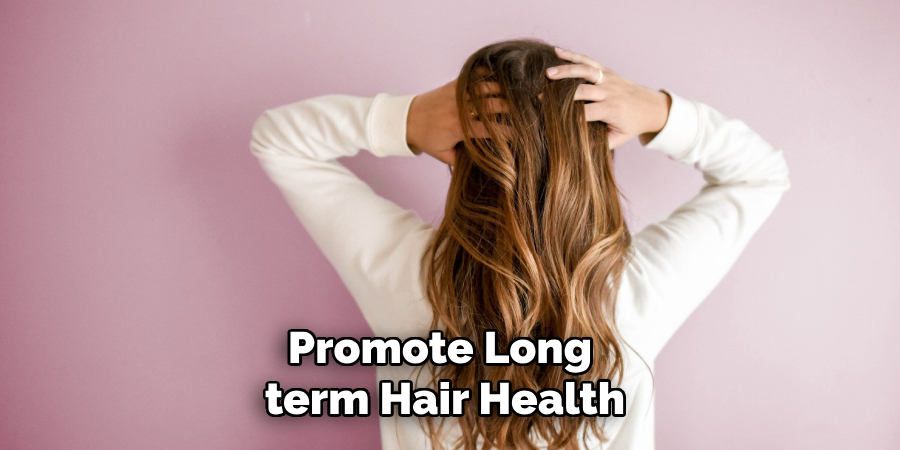
Following these steps, you can successfully remove silicone build-up and restore your hair’s natural vitality. Consistency and mindful product choices are key to keeping your hair looking and feeling its best!
5 Things You Should Avoid
Here are five things you should avoid when trying to remove silicone from your hair:
- Using Silicone-based Hair Products: To effectively remove silicone from your hair, avoid using hair products that contain silicone. Look for silicone-free shampoos and conditioners specifically designed to eliminate silicone buildup.
- Overwashing Your Hair: While washing your hair frequently to remove silicone may be tempting, overwashing can strip your hair of its natural oils and cause dryness. Stick to a regular washing routine that suits your hair type.
- Using Hot Water: Hot water can open up your hair’s cuticles, making it more susceptible to silicone buildup. Opt for lukewarm or cool water when rinsing your hair to help seal the cuticles and prevent further silicone accumulation.
- Skipping Clarifying Treatments: Clarifying treatments, including silicone, are formulated to remove product buildup. Add a clarifying shampoo or treatment into your hair care routine once a month to help remove residual silicone and restore your hair’s natural shine.
- Not Properly Rinsing Your Hair: Thoroughly rinsing your hair after shampooing and conditioning is crucial to remove residual silicone. Take the time to ensure all products are thoroughly rinsed out to prevent buildup and leave your hair feeling clean and refreshed.
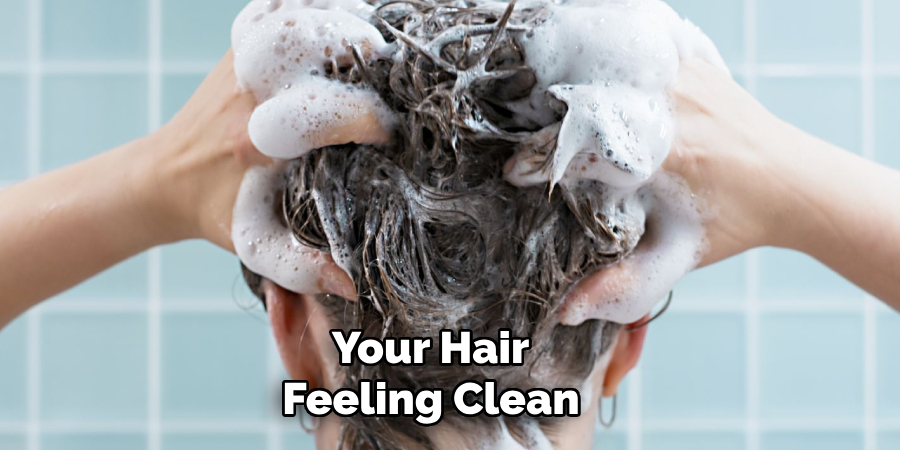
Conclusion
By avoiding these common mistakes, you can effectively remove silicone from your hair and maintain healthy and lustrous locks.
Remember always to read the labels of your hair products and opt for silicone-free options. Stick to a regular washing routine and incorporate clarifying treatments into your hair care routine to keep your hair free from buildup. And most importantly, make sure to properly rinse out all products from your hair after each use. With these tips in mind, you can say goodbye to silicone buildup and hello to beautiful, healthy hair!
Hopefully, the article on how to get silicone out of hair has been helpful and informative. Remember these tips for your following hair care routine, and enjoy the benefits of silicone-free hair! Happy washing!
About the Author
Jane Hubbard is a passionate beauty expert with a wealth of experience in makeup, hair, and overall beauty techniques. After years of working as a hairdresser specialist, she followed her entrepreneurial spirit and started her own consultancy business.
Jane has always been driven by her desire to help others feel confident in their own skin, and she does this by sharing her knowledge, experiences, and practical beauty tips. Through her consultancy, she empowers individuals to embrace their unique beauty, offering tailored guidance that boosts both self-esteem and personal style.
Professional Focus
- Specializes in makeup, hairstyling, and beauty consulting.
- Provides personalized beauty advice, tips, and techniques to help individuals feel confident in their appearance.
- Dedicated to staying up-to-date with the latest industry trends and developments.
- Passionate about creating a comfortable and empowering experience for every client.
Education History
- University of Craft and Design – Bachelor of Fine Arts (BFA) in Woodworking and Furniture Design
- Woodworking Apprenticeships – Extensive hands-on training with skilled craftsmen to refine carpentry and furniture making techniques
- Online Courses & Masterclasses – Continued education in advanced woodworking techniques, design principles, and specialized tools
Expertise:
- Makeup artistry, hairstyling, and beauty consulting.
- Personalized beauty techniques to enhance confidence and self-expression.
- Educating clients on how to maintain their beauty routines at home.
